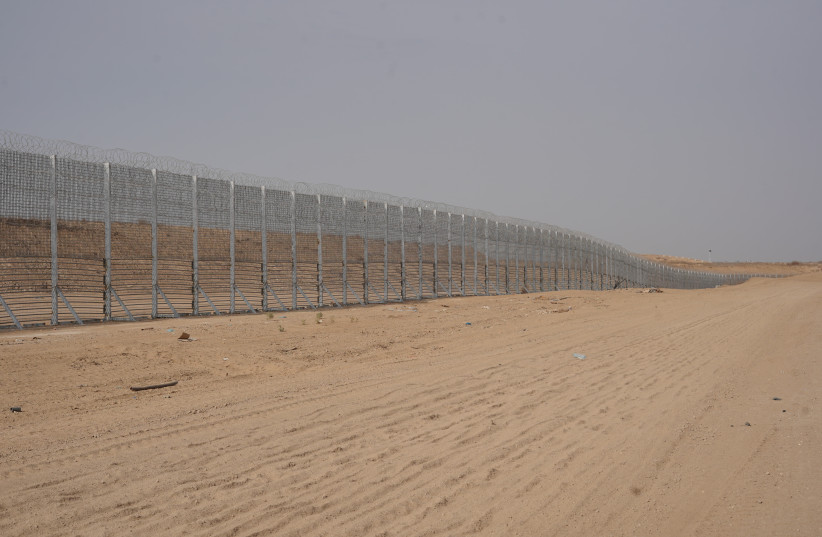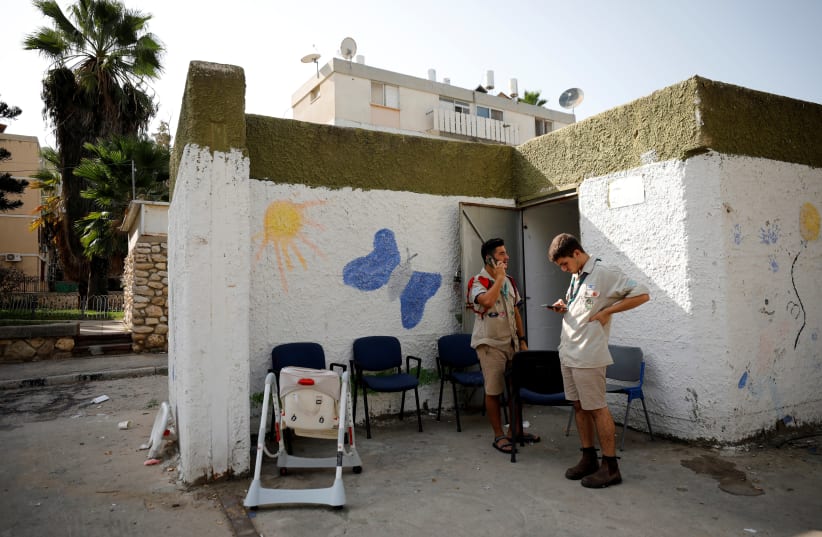For the first time in five years, the Defense Ministry and the IDF will build shelters for about 30 daycare centers in the southern city of Sderot and Gaza border communities.
The recommendation to begin the project was approved by Defense Minister Benny Gantz, and the list of localities where the shelters will be built has been approved by ministry Director-General Maj.-Gen. (ret.) Amir Eshel and Home Front Command head Maj.-Gen. Uri Gordin.
Troops from the Home Front Command and the Engineering and Construction Division have mapped daycare centers in the communities agreed upon to upgrade. The work will begin “in the near future in cooperation with authorities,” the ministry said in a statement.
The project to build the shelters in southern Israel is the first since 2017.
“Defense is a critical issue for the resilience of communities along the front lines of conflict,” said Deputy Defense Minister Alon Schuster. “As a former mayor in the Gaza border communities and as the current deputy defense minister, I am proud to be part of improving protection in daycare centers [there]... for the children and to give peace [of mind] to parents and educational staff.”


The money for the shelters became available after the state budget was approved in November, he said.
Since 2006, the government has invested some NIS 1.7 billion in protective facilities in southern Israel around the Gaza Strip, where some 46,000 residents live, spending an estimated NIS 37,000 per resident.
Following the 11-day-long Operation Guardian of the Walls, when Hamas and Palestinian Islamic Jihad fired over 4,000 rockets and mortars at Israel, the IDF recognized that despite the Iron Dome missile defense system, rocket barrages are an area of weakness for the military.
While Iron Dome was able to shoot down most of the projectiles heading toward populated areas, some 11 Israelis were killed and hundreds were wounded during the conflict, particularly in the city of Ashkelon, which has a population of over 120,000 and where 25% of residents do not have access to shelters.
The government pledged additional funds to the large southern coastal city to build bomb shelters and other fortifications following the conflict, as well as to refit bomb shelter windows in communities up to seven kilometers from the Hamas-run Gaza Strip.
An updated intelligence report found that terrorist groups in the coastal enclave are in possession of rockets with new capabilities that can strike targets within that range.
The IDF said this was the first time such a decision was made retroactively, and it was done “in order to ensure the safety of the citizens of Israel in accordance with the threats posed.”
Following months of research by the Home Front Command, there are some 17,000 shelters within 7 km. of the Gaza Strip, and of those, an estimated 8,000 windows will need to be replaced, at a cost of NIS 60m. Should all of the shelters be replaced, it would cost an estimated NIS 119m.
Despite new regulations and plans by the Home Front Command to do so, there had been no headway on replacing them, due to a lack of government decision or budget. A senior officer in the Home Front Command’s Southern Division told The Jerusalem Post in a recent interview that he believes the project will begin this year.
